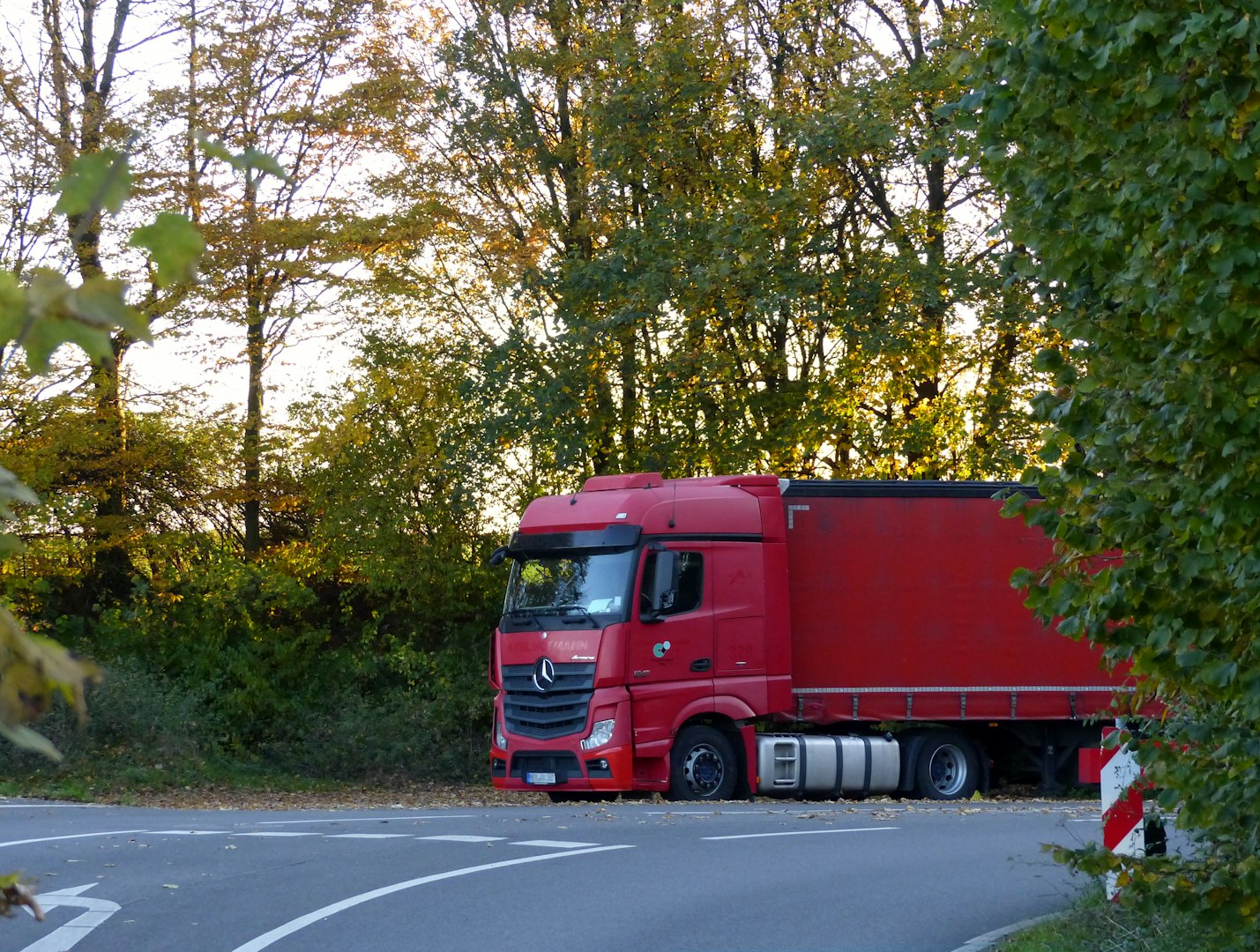Understanding the Direct Vision System (DVS)
Zed Aziz
19th June 2024

1. What is the Direct Vision System?
The Direct Vision System (DVS) assesses the degree to which a driver can see directly through their cab windows, crucial for the safety of all road users. Developed by Transport for London (TfL), DVS assigns a star rating (0-5) to heavy goods vehicles (HGVs) based on the direct vision afforded from the driver’s seat.
0 Stars: No or minimal direct vision.
1 Star: Poor direct vision.
2 Stars: Moderate direct vision.
3 Stars: Good direct vision.
4 Stars: Very good direct vision.
5 Stars: Excellent direct vision.
From 28 October 2024, HGVs over 12 tonnes must achieve a minimum three-star rating or fit the Progressive Safe System (PSS) to operate within Greater London.
2. Rationale Behind the DVS Initiative
The DVS initiative aims to enhance road safety by minimising blind spots, thus preventing collisions with vulnerable road users such as pedestrians, cyclists, and motorcyclists. HGVs are disproportionately involved in fatal accidents with these groups. Improving direct vision helps in:
Reducing the likelihood of blind spot collisions.
Increasing driver awareness of their surroundings.
Supporting the Vision Zero strategy to eliminate road fatalities.
3. Technical Specifications of the DVS
The DVS star rating is determined by:
Field of Vision: Evaluation of visibility through the cab windows.
Mirror Configuration: Assessment of mirrors for effective blind spot coverage.
Cab Design: The design and structure of the HGV cab impacting the driver’s view.
Typical features of three-star vehicles:
Enhanced direct vision through redesigned lower windows and improved cab structures.
Optimised mirror systems to eliminate blind spots.
Use of advanced glazing materials to maximise visibility.
4. Camera Systems in the Progressive Safe System (PSS)
For HGVs that do not meet the three-star rating, the PSS is mandatory. The PSS integrates advanced camera systems with other safety technologies:
Blind Spot Cameras
Types: Wide-angle, multi-camera systems.
Specifications:Resolution: Typically 1080p HD or higher for clear visibility.Field of View: 180° horizontal field of view to cover blind spots on both sides.Night Vision: Infrared capabilities to function effectively in low-light conditions.Waterproof Rating: IP67 or higher for durability in adverse weather.Recording: Continuous recording with loop functionality for incident review.Mounting: Flush or bracket-mounted, positioned to cover critical blind spots.
Proximity Sensors
Technology: Ultrasonic or radar-based.
Specifications:Range: Typically up to 2 metres.Detection Angle: Wide-angle (120° - 180°) to detect objects in close proximity.Alerts: Audio-visual alerts inside the cab to notify the driver of obstacles.
Side Under-Run Protection
Purpose: Prevents pedestrians and cyclists from being dragged under the vehicle.
Specifications:Material: High-strength steel or aluminium.Installation: Rigid mounting on the sides of the vehicle, complying with EU regulations.
Improved Warning Systems
Types: Audible alarms and visual alerts.
Specifications:Audible: Distinct tones for different warning scenarios (e.g., left turn, reversing).Visual: LED indicators on the vehicle’s exterior to warn other road users.
Left Turn Alarms
Purpose: Alerts pedestrians and cyclists when the vehicle is turning left.
Specifications:Activation: Integrated with the vehicle’s indicator system.Volume: Adjustable to comply with noise regulations.Message: Pre-recorded messages or tones specific to left turns.
Driver Training
Focus: Effective use of DVS and PSS technologies.
Delivery: Classroom-based or online modules, with practical assessments.
5. Costs of Implementing the DVS and PSS
Implementing the DVS and PSS involves several costs:
Direct Vision Upgrades:Retrofitting windows and cabs: £3,000 - £8,000 per vehicle.Advanced mirror systems: £500 - £1,500 per vehicle.
Progressive Safe System:Blind Spot Cameras: £400 - £2,000 per vehicle.Proximity Sensors: £300 - £1,200 per vehicle.Side Under-Run Protection: £1,500 - £3,000 per vehicle.Warning Systems and Alarms: £200 - £1,000 per vehicle.Driver Training Programmes: £150 - £500 per driver.
6. Benefits and Compliance
Adopting the DVS and PSS offers several advantages:
Enhanced Safety: Reduced risk of accidents involving vulnerable road users.
Regulatory Compliance: Legal operation within Greater London.
Corporate Responsibility: Improved public image and commitment to safety.
Non-compliance with DVS requirements will result in penalties and restricted access to Greater London, affecting operational efficiency and reputation.
7. How to Obtain a DVS Star Rating
Vehicle operators can obtain a DVS rating by:
Applying through the TfL website: Submit vehicle details and required documentation.
Undergoing an Assessment: Vehicles are evaluated based on direct vision criteria.
Receiving a Rating Certificate: Issued by TfL, allowing legal operation in Greater London.
8. Case Studies and Real-World Applications
Example 1: Fleet Operator Implementation
A large logistics company retrofitted their fleet with blind spot cameras and enhanced side under-run protection. This investment not only improved their DVS rating but also significantly reduced incidents and insurance claims related to accidents involving cyclists.
Example 2: Small Business Adaptation
A small construction firm implemented proximity sensors and left turn alarms on their vehicles. The initial costs were offset by increased safety and compliance, leading to smoother operations within Greater London.
9. Future Developments and Considerations
As technology evolves, the DVS and PSS may incorporate:
AI-Powered Vision Systems: Advanced detection of road users.
Advanced Driver Assistance Systems (ADAS): Integrated with DVS for real-time alerts and automated responses.
Telematics Integration: Monitoring and reporting compliance and safety metrics.
Conclusion
The DVS and Progressive Safe System represent crucial advancements in HGV safety, aimed at protecting vulnerable road users and aligning with modern urban transportation policies. For vehicle operators, understanding and implementing these systems not only ensures compliance but also fosters a safer and more responsible operational environment.